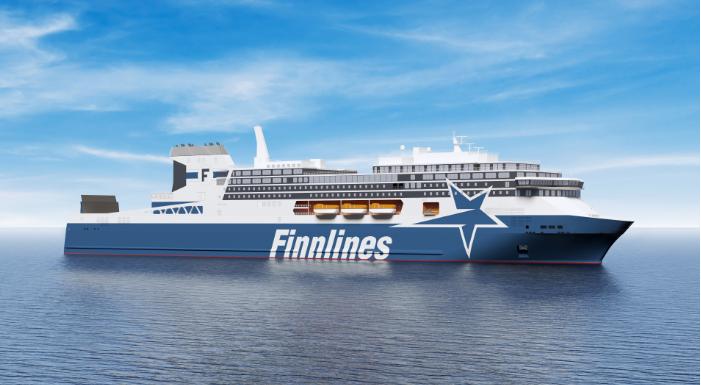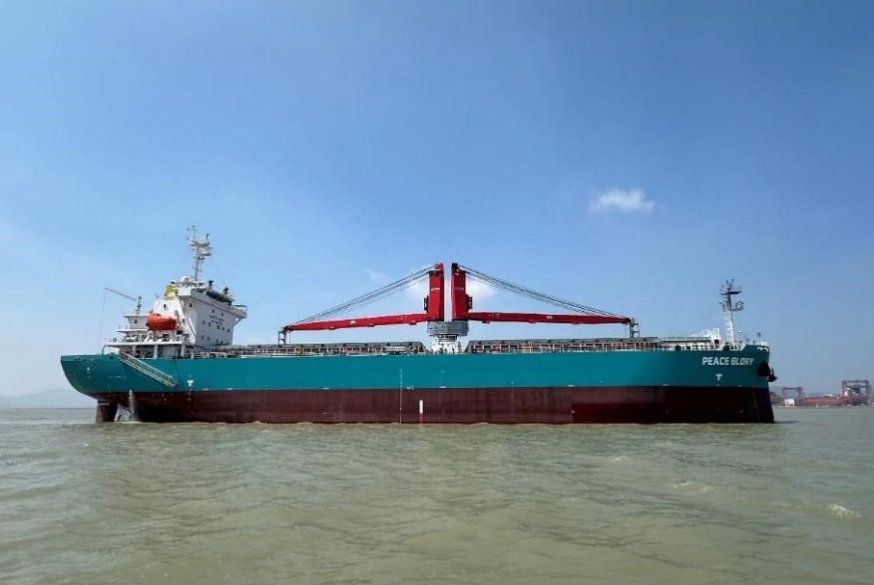A new Hong Kong shipowner is taking a bold step into the liquid cargo sector.
Xinde Marine News has learned that EGPN Bulk Carrier Co., Ltd., headquartered in Hong Kong, has signed a contract with Dalian Shipbuilding Industry Co. (DSIC) for the construction of two 115,000-dwt LR2 product tankers, each worth around USD 70 million. The vessels will be built at Shanhaiguan Shipbuilding Indusctry CO. of DSIC and are scheduled for delivery between late 2027 and mid-2028.
This $140 million investment signals EGPN’s accelerated diversification from dry bulk into the tanker sector — a major strategic shift for a company long known for its solid dry bulk operations.
Strategic Transformation
Founded through the 2014 merger of Donghai Shipping (HK) and Anhe Shipping, EGPN has grown into a full-spectrum carrier spanning dry bulk, product and chemical tankers, and offshore support vessels. The company currently controls more than 1.26 million dwt owned capacity and manages about 3 million dwt in total.
The move into LR2 tonnage follows the successful launch of its chemical-tanker program at Wuhu Shipyard, where the first 18,500-dwt vessel Western Acacia has been launched and the sister ship Western Bergenia will deliver in early 2026. Both are IMO EEXI Phase III and NOx Tier II compliant — reflecting the owner’s forward-looking environmental agenda.
Timing and Market Context
Current newbuilding prices for LR2s stand near USD 72 million, about 4% lower than a year ago, giving EGPN a cost advantage amid rising replacement demand. The order also coincides with the global tanker sector’s fleet-renewal cycle, as owners position for upcoming carbon-intensity regulations and expanding long-haul product trades.
A Broader Vision
EGPN’s engagement with tankers dates back to 2021, when it traded a second-hand VLCC (Eastern Juniper) for a USD 5.5 million profit within six months. With three small product tankers already in operation and up to eight chemical tankers under construction, the LR2 program cements its transition into a multi-segment energy transport operator.
This evolution — from bulk to liquid, from opportunistic trades to fleet investment — mirrors a wider trend among Asia’s new-generation private shipowners leveraging China’s shipbuilding capacity to expand into high-value, compliant, and greener tonnage.

Xinde Marine News has learned that EGPN Bulk Carrier Co., Ltd., headquartered in Hong Kong, has signed a contract with Dalian Shipbuilding Industry Co. (DSIC) for the construction of two 115,000-dwt LR2 product tankers, each worth around USD 70 million. The vessels will be built at Shanhaiguan Shipbuilding Indusctry CO. of DSIC and are scheduled for delivery between late 2027 and mid-2028.
This $140 million investment signals EGPN’s accelerated diversification from dry bulk into the tanker sector — a major strategic shift for a company long known for its solid dry bulk operations.
Strategic Transformation
Founded through the 2014 merger of Donghai Shipping (HK) and Anhe Shipping, EGPN has grown into a full-spectrum carrier spanning dry bulk, product and chemical tankers, and offshore support vessels. The company currently controls more than 1.26 million dwt owned capacity and manages about 3 million dwt in total.
The move into LR2 tonnage follows the successful launch of its chemical-tanker program at Wuhu Shipyard, where the first 18,500-dwt vessel Western Acacia has been launched and the sister ship Western Bergenia will deliver in early 2026. Both are IMO EEXI Phase III and NOx Tier II compliant — reflecting the owner’s forward-looking environmental agenda.
Timing and Market Context
Current newbuilding prices for LR2s stand near USD 72 million, about 4% lower than a year ago, giving EGPN a cost advantage amid rising replacement demand. The order also coincides with the global tanker sector’s fleet-renewal cycle, as owners position for upcoming carbon-intensity regulations and expanding long-haul product trades.
A Broader Vision
EGPN’s engagement with tankers dates back to 2021, when it traded a second-hand VLCC (Eastern Juniper) for a USD 5.5 million profit within six months. With three small product tankers already in operation and up to eight chemical tankers under construction, the LR2 program cements its transition into a multi-segment energy transport operator.
This evolution — from bulk to liquid, from opportunistic trades to fleet investment — mirrors a wider trend among Asia’s new-generation private shipowners leveraging China’s shipbuilding capacity to expand into high-value, compliant, and greener tonnage.

by Xinde Marine News Skye Polly
The opinions expressed herein are the author's and not necessarily those of The Xinde Marine News.
Please Contact Us at:
media@xindemarine.com





